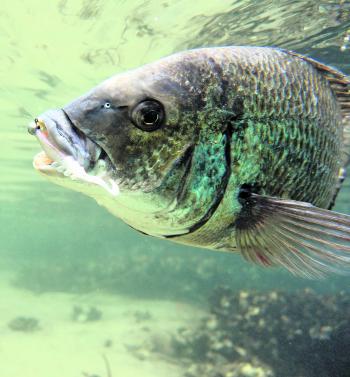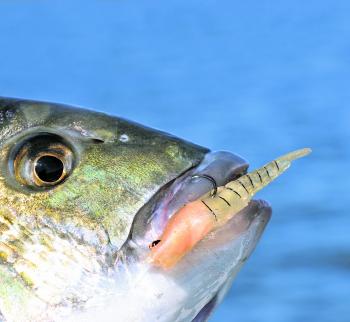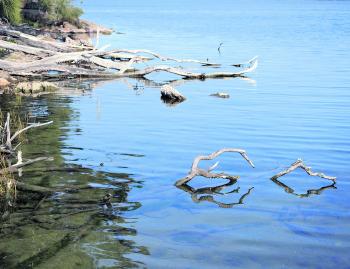Lots of anglers still struggle to crack the ‘bream on lures’ code. Truth is, these fish are no pushover. But if you follow Starlo’s simple, five-point plan, we’re confident you’ll be posing for a photo with your first bream on a soft plastic very soon!
As I travel the country fishing, researching stories and gathering material for this and the many other publications I contribute to, I come across an increasing number of anglers who’ve embraced lure fishing and, in particular, the use of soft plastic lures. The uptake of soft plastics has definitely been one of the most significant trends in Australian recreational angling over the past 10 to 15 years, and its popularity shows no sign of diminishing any time soon.
Softies are great lures and they’re not all that hard to use. Most new chums start catching at least the odd fish very early in their plastic-flicking careers. But some species are tougher nuts to crack than others, and the humble bream is perhaps the trickiest of the lot. It’s also the one I get asked about the most. The question typically begins with a statement along the lines of: “I can catch plenty of flathead on plastics, but I’m damned if I can work these bream out!”
If you’re in that camp, I’m here to help! Below I’ve listed a simple, five-step strategy for cracking the ‘bream on lures’ code. I’ve accompanied this with a short, no-nonsense how-to video clip on my ‘Starlo Gets Reel’ YouTube channel. You can go straight to that video by scanning the QR code at the bottom, or by typing this URL into your browser: www.youtube.com/watch?v=8wuLI5-M3UQ
Okay… Are you ready to learn how to catch your very first bream on a soft plastic? Here we go!
The perfect tackle for chasing bream on soft plastics is a 1.9-2.2 m ‘flick rod’ with a nice light tip, usually rated for 1-3kg line. Match this light rod with a 1000 to 2500 size spinning reel and fill the spool with quality 2 or 3 kg monofilament line, or braid carrying a similar strength rating. (If you choose braid, always add at least a rod length of clear monofilament leader of a similar strength to the end before tying on your lure.)
Start off with small, curl-tailed grubs or wriggler-style plastics measuring somewhere between 50 and 100 mm in length. Pick natural, life-like colours that mimic prawns, worms or little fish. Combine these tails with light jig heads weighing anywhere from about 1 to 3.5 g (about 1/30 to 1/8oz) that carry sharp, fine-gauge hooks in sizes from No. 6 up to No. 1 (a No. 4 or No. 2 is usually perfect).
You’d be amazed how many people get this important bit wrong, and it makes a huge difference on bream. Take the time to properly rig every tail and if it’s not right, do it again. (Study the accompanying video on my YouTube channel for step-by-step instructions.)
You won’t catch ’em if you cast where they ain’t! Bream love structure, including man-made structure. Concentrate on snags, rock bars, creek mouths, bridge or jetty pylons, weed bed edges, oyster leases, boat moorings, breakwalls, channel markers and the like, and cast your lures close to these structures.
As a rule (unless the spot you’re fishing is very snaggy), start by letting your rigged plastic sink all the way to the bottom. Then work it with a series of fairly slow lifts, hops and drops. Again, study my basic how-to video on the “Starlo Gets Reel” YouTube channel for more details and a demonstration.
And that, folk, is about it! As I like to say, it ain’t rocket science! Follow this simple five-point plan, watch my accompanying video for additional information, and I can all but guarantee that you’ll start catching bream on soft plastics sooner rather than later.
So, what are you waiting for?
Reads: 13543
Bream love soft plastics, but unless you get the whole package just right, success may prove to be elusive.

Small, natural-looking plastics and light jig heads with fine, sharp hooks are the way to go, especially when getting started.

You’ll never forget your first decent bream on a soft lure!

Light, sensitive spinning gear based around a 1000 to 2500 reel and 1.9 to 2.2 m flick rod is perfect for bream.

Prime bream habitat typically contains a mix of depths and plenty of hard structure.




